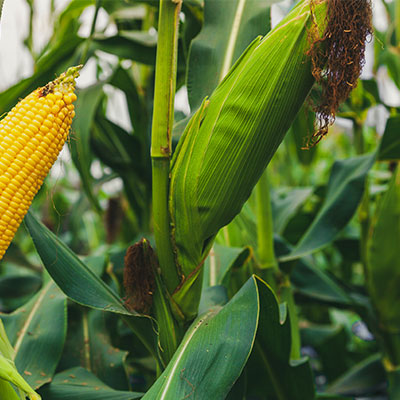Porto Alegre, June 14, 2021 – The climate in the US Midwest remains quite complicated this June. The rain sharply diminished regionally, mainly in important states such as Iowa, raising further concern. However, despite the news on weather and cut in stocks, the week showed falling prices on the Chicago Board of Trade. The market was afraid to bet on sharper bullish positions with China reducing its buying momentum, the climate being able to change direction at any time, and the planted area report on June 30.
The USDA’s June supply and demand report was expected to cut the US stocks from 1.507 to 1.41 billion bushels. USDA surprised the market by maintaining very firm domestic demand data for all consumer segments and raising exports to 72 million tons for the current business year. As a result, stocks were lower than expected by the market, at 1.357 billion bushels or 28.1 million tons, which indicates stocks for the current business year, 20/21, at the lowest level since 2012.
As the current business year ends next August and China seems to have already made the necessary purchases for its supply until then, the market looked at the data on stocks but reacted little in terms of prices. This is because the focus of events is on the new US crop. The harvest starts in September and, until then, the big event to be dealt with is the climate in the Midwest.
New crop stocks were reduced as a result of the cut in the current stock to 34.5 million tons, which is technically very low, but with USDA keeping 2022 exports at 62.2 million tons, down 10 million from the current number. Therefore, tensions over the 2021 season will continue. The next USDA report will take place on June 30. This is the planted area report, a number that may be updated until January 2022. The planting intention showed a potential area of ??91.1 million acres for corn. Reliable sources indicate the possibility of a slightly larger area for the next 30th by 500,000 to 1 million additional acres, which seems plausible given the available area in the Midwest. However, until the 30th, local private companies will make their estimates. The disagreement this year about the estimates is huge. Numbers from 91 to 96.5 million acres are being released. And there is a huge difference between an area of ??up to 92 million acres and any larger volume for the supply and demand picture.
Owing to this disagreement or the bias of some consultants in imposing a bearish symptom, the market was not able to clearly reflect the USDA’s report for this month of June. Report with bearish information, but the market operating downward indicates traders are paying attention to other points. And this point is the number of planted area on June 30. Larger areas suggest higher production even if USDA needs to cut the projected productivity.
The constant figure is the weather. June had the forecast of normal to above-normal rainfall for the entire Midwest, even in the Plains, a region that is drier now. Surprisingly, the models removed most of the rainfall in early June and signaled a situation of below-normal rainfall and above-average heat in the period for the Plains and the north of the Corn Belt. In a normal year, this information alone could have caused a strong upward movement in Chicago for both corn and soybeans. However, it seems that the market prefers to wait for pollination in July, the planted area report on the 30th, and some regional information that, in effect, the climate situation is bringing some loss of production potential.
Most crops are in vegetative development and/or early stage of development. Pollination and silking will only take place in July. Therefore, pointing out crop losses only through weather forecasts, so far, is only an exercise rather than a reality. In short, it needs to rain in the mid-north of the Midwest. Last week, it rained in the Dakotas, alleviating the regional situation, but it did not rain in Iowa, the main growing state, and at this time affected by the drought.
So, the weather will determine this price volatility until September. The return of rainfall will provide a strong decline in prices on the Chicago Board of Trade. The continuation of dry climate in the center-north of the producing region may generate new bullish and more tense movements in the international market.
Another sore point is the Chinese picture. After some decline in domestic prices due to the government’s political actions on the local domestic market, local prices rallied at the end of the week. The new Chinese crop only arrives in October, with good progress so far. However, it is not known if the country will still need to make new purchases until then. If domestic prices rise again and there are good import costs, it would not be surprising if China made new purchases of US and/or Ukrainian corn. We only regret that the USDA’s supply and demand picture still shows Chinese stocks of 198 million tons, which seems clearly far from reality considering China’s import moves.
A strong reduction in corn imports by Europe in this 20/21 business year, which ends next September, for the resumption of imports on 21/22, is the USDA’s signal for the bloc. To some extent, 12 million tons of imports in 2021 affect the potential volume of Brazilian sales to the bloc, given that Spain and the Netherlands have been good importers of this origin. The wheat crop in the entire bloc and in good progress in Russia could also be an indicator of lower dependence on imported corn.
Agência SAFRAS Latam
Copyright 2021 – Grupo CMA

